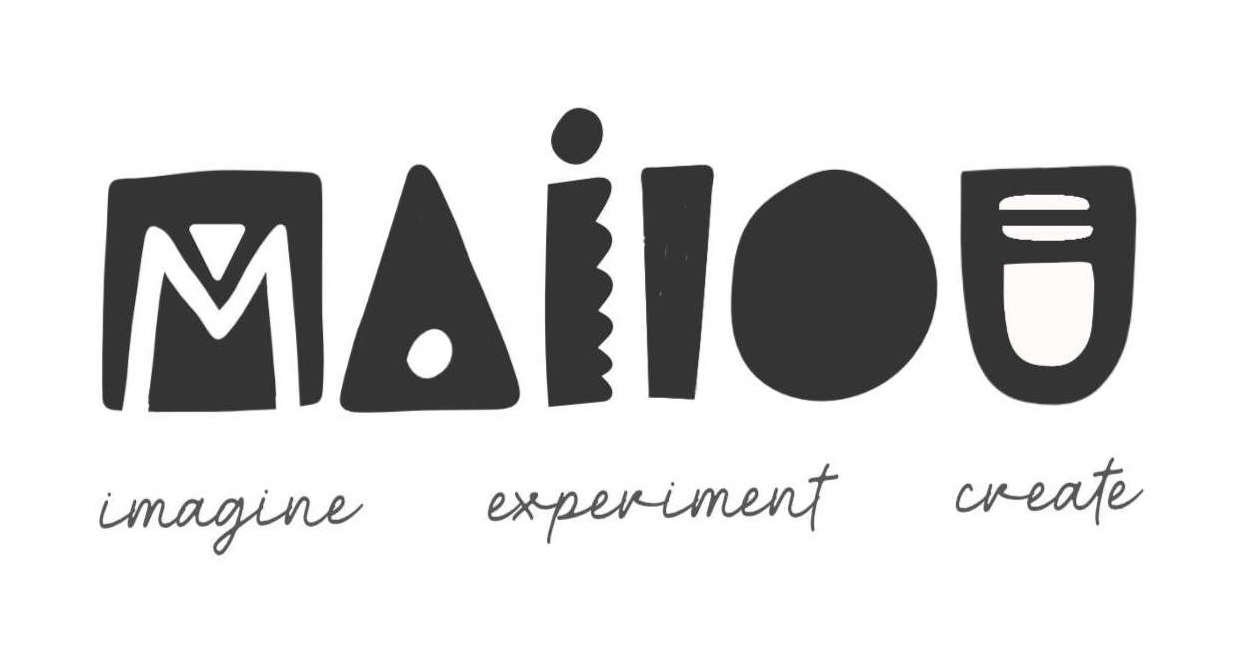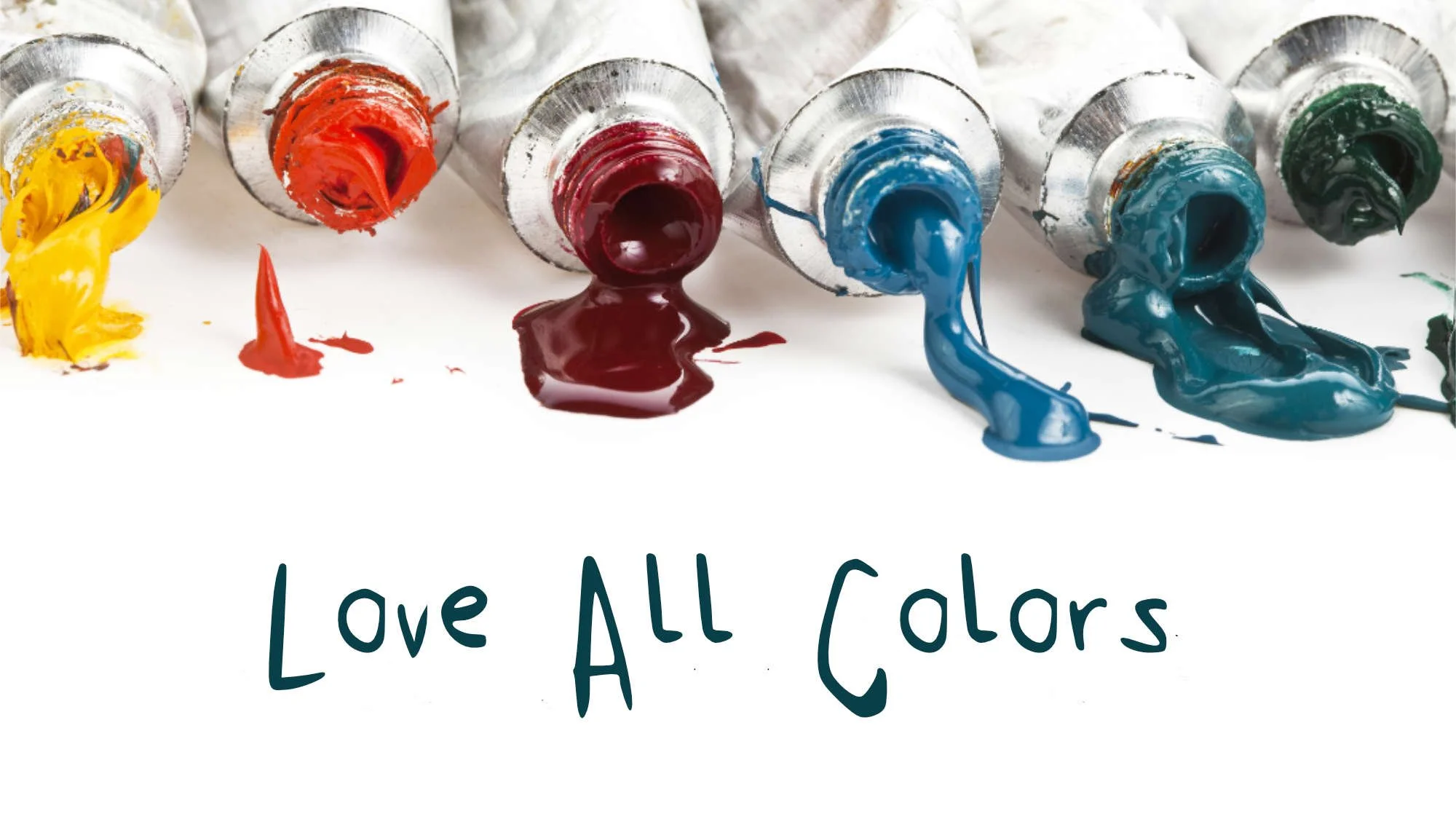Love All Colors
What is your favorite color? After spending so much time around colors, choosing color palettes for my projects, and looking at colorful art, crafts, food photography, and fashion, to name but a few. I can’t answer this question anymore. Can you? Do you feel the more time you spend playing with colors, the more colors you like? But what about the colors you don’t like?
What is your least favorite color?
Have you ever had to do a project for a client, a custom order, or a gift for a friend with the colors they love and you hate? Working with colors you don't like can negatively impact the entire project and your creativity. So I asked myself, how can I change this? How can I lift this restriction on my choices and learn to free myself from this negative approach to some colors? How can I work out a way to enjoy working with any color?
Let's learn how to love all colors.
This exercise is designed to do just that. It will help you embrace creative freedom while fostering a more open-minded and less judgmental view of color choices—whether in art, design, fashion, or home décor.
I'm not saying you have to love every color by the end of this. You'll likely return to your favorite palettes. But next time you face an "unwanted" color, you might approach it with curiosity instead of frustration. You might even enjoy the challenge.
OK, less talking, more doing. Let the creative challenge begin!
1. Find me!
Select the color you dislike the most. Use colorful magazines, scraps of fabrics, colored cards, scrapbook paper, yarn, thread, color swatches from the DIY store, watercolor paint, colored pencils, markers, or crayons. Whatever materials you work with often.
2. See me
Place your color against a white background, or if you have it as a color pencil or paint, you can draw or paint with it on white paper. Please spend a few minutes looking at it and/or touching it or even talking to it. I'm serious. Call me crazy, but it works! Just say something positive like" You are an OK color," "I will try to create something nice with you," "I know you want to play too," etc. The goal here is to see and accept this color. Usually, you would automatically push it away or hide it, but today, let's try to see it as a "good" color and look at it as an opportunity to learn and grow as a designer and artist.
3. Use me!
If you're like me, you probably have a lot of colorful stuff you work with all over your desk, and there's a good chance you accidentally discovered excellent color companions for your new friend. Make a little mess and spread scraps of materials or color swatches on your desk. Place the "bad" color near every other color on your desk. Take your time, play with it, and let yourself be surprised by the new color palettes you will discover!
Set aside the colors you think will look good with your "bad" guy. One by one, combine them with your "bad color." Now, you can start building a new color palette, starting with those two and adding another color that looks good with both colors and separately. Repeat this process until you have up to five colors for the new palette.
Another less messy way to get to like your new color is to surround it with colors from the same color family. For example, if the "bad" color is dark navy blue, select different shades of blue/and turquoise and see how they look together. Next, add new colors like black, yellow, or green to this group and build the new color palette from here.
I hope that by now, you have found a few great new combinations and that your "bad" color is turning into an "OK" color or even the right color. But if you are not sure yet, there is one more thing you can do (there are many more things you could do that I didn't think of). There is one place without wrong colors or bad color combinations—nature. Look at flowers, insects, or birds and see how your color is doing there. Even rotten compost piles can have an interesting color palette.
4. Transform Me!
If you dislike a color in its pure form, try altering it slightly. Mix paints to shift their hue, tint, or shade. Layer it with other materials, blend it with textures, or distress it with sandpaper, wax, or crackle medium. A color you dislike in a flat, solid form becomes interesting when modified.
5. Find My Purpose!
Colors evoke emotions, moods, and associations. Instead of focusing on personal preferences, ask: Where would this color shine? It's perfect for creating contrast, adding warmth, evoking nostalgia, or communicating a message in an artwork. If it's a color you dislike for home décor, maybe it's stunning in fashion or mixed media.
6. Pair Me With a Texture!
The same color in different textures can have vastly different effects. Try working with your "bad" color in glossy vs. matte, metallic vs. soft, smooth vs. rough textures. Velvet red feels luxurious, while a flat, dull red might feel lifeless.
7. Use Me in Small Doses!
This color may work best in accents. Try using it only in outlines, shadows, or tiny details. If you still don't like it, try restricting it to just one small section of your project and see if that makes it more tolerable.
8. Make Me the Star!
Flip the challenge—design a whole piece around your "bad" color instead of making it an afterthought. Create a mood board inspired by this color. Find artwork, objects, or fashion pieces that make it look appealing and analyze why they work.
9. Give Me a Story!
Sometimes, a color you dislike can have a new meaning if you give it a narrative. Imagine it as the main character in a fairy tale, a spirit of an emotion, or a symbolic element in a piece of art. That sickly green reminds you of old book covers or vintage wallpaper and suddenly feels nostalgic rather than unpleasant.
10. Wear Me for a Day!
If you dislike a color, wear it or use it temporarily—maybe as a scarf, nail polish, or notebook cover. This lets you experience it in a new setting, where it might surprise you by complementing your mood or surroundings.
“Always keep your eyes open. Keep watching because whatever you see can inspire you.”


